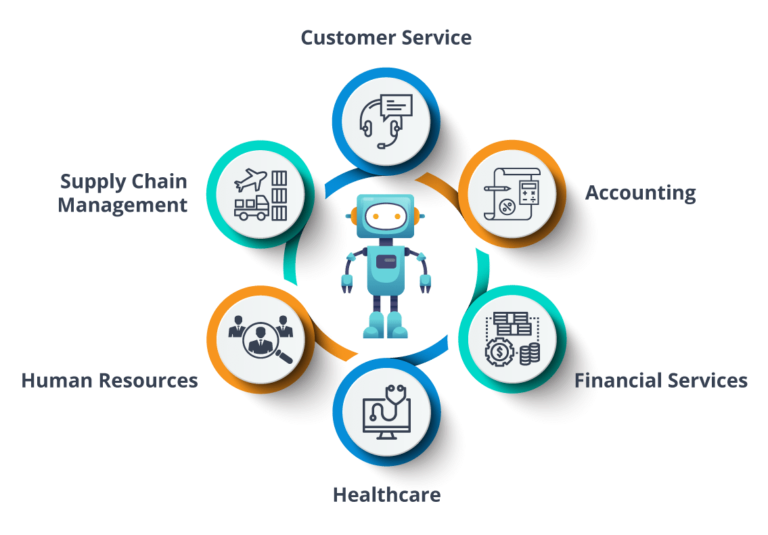Exploring the Benefits of Automation for Digital Transformation
Digital transformation has become a crucial part of modern business strategy, and automation has emerged as a vital component of this transformation. Automation refers to using technology to automate manual and repetitive tasks, allowing organizations to streamline operations, reduce costs, and improve efficiency. In this article, we will explore the benefits of automation for digital transformation and discuss why it is essential for organizations to prioritize automation in their transformation journey.

Improving Efficiency and Productivity
One of the most significant benefits of automation in digital transformation is improving efficiency and productivity. By automating manual and repetitive tasks, organizations can free up employees’ time, allowing them to focus on higher-value tasks. This can lead to increased productivity and faster turnaround times. Automation can also help organizations to eliminate errors and reduce the risk of human error, leading to higher-quality outputs.
Reducing Costs
Another significant benefit of automation in digital transformation is reducing costs. By automating manual and repetitive tasks, organizations can reduce the need for manual labor, leading to reduced labor costs. Automation can also help organizations to eliminate errors and reduce waste, leading to cost savings in the long run. By streamlining operations and reducing costs, organizations can increase profitability and gain a competitive advantage in the digital landscape.
Enabling Scalability
Automation can also enable scalability, allowing organizations to expand operations without additional manual labor. By automating tasks, organizations can increase capacity without incurring additional labor costs. Automation can also help organizations respond quickly to changing market conditions, allowing them to adjust operations in real-time to meet customer demand.
Improving Customer Experience
Automation can also be used to improve the customer experience, leading to increased customer satisfaction and loyalty. By automating processes such as customer service and support, organizations can respond quickly to customer inquiries and resolve issues more efficiently. Automation can also be used to personalize the customer experience, offering targeted promotions and recommendations based on customer behavior and preferences.

Enabling Data-Driven Decision Making
Automation can also enable data-driven decision-making, allowing organizations to make informed decisions based on real-time data. By automating data collection and analysis, organizations can gain valuable insights into customer behavior, market trends, and operational inefficiencies. This information can be used to inform strategic decision-making and optimize business operations. By leveraging automation tools, organizations can quickly analyze large data sets and make real-time data-driven decisions.
Improving Workforce Retention and Satisfaction
Automation can improve workforce retention and satisfaction by reducing the need for manual labor and streamlining workflows. Organizations can offer their employees more challenging and rewarding work by automating repetitive and low-level tasks. This can lead to increased job satisfaction and higher levels of employee retention. Additionally, automation can help reduce the workload on employees, leading to improved work-life balance and reduced burnout.
Creating New Opportunities
Automation can also create new opportunities for organizations by unlocking new business models and revenue streams. By automating processes and workflows, organizations can create new products and services that were not possible before. For example, automation can enable organizations to offer new digital services, such as chatbots and virtual assistants. Automation can also help organizations to leverage data and analytics to identify new market opportunities and develop new business models. By embracing automation, organizations can stay ahead of the curve and drive innovation in their industry.

Ensuring Compliance and Security
As organizations automate more tasks, it is essential to ensure that automation is carried out in a compliant and secure manner. Compliance refers to adherence to legal and regulatory requirements, while security refers to protecting data and systems from unauthorized access and cyber threats. Organizations can minimize the risk of penalties and reputational damage by ensuring compliance and security. Automation can also be used to improve safety, such as automating patch management and vulnerability scanning.
Conclusion
Automation is a critical enabler for digital transformation, and its benefits cannot be overstated. From improving efficiency and productivity to reducing costs, enabling scalability, improving customer experience, and enabling data-driven decision-making, automation can help organizations achieve their digital transformation goals. If you want to learn more about how automation can benefit your organization, check out my website for more informative articles on this topic and other technology and business-related subjects. I regularly provide valuable insights and practical advice for organizations of all sizes so that you can stay up-to-date with the latest trends and best practices.


